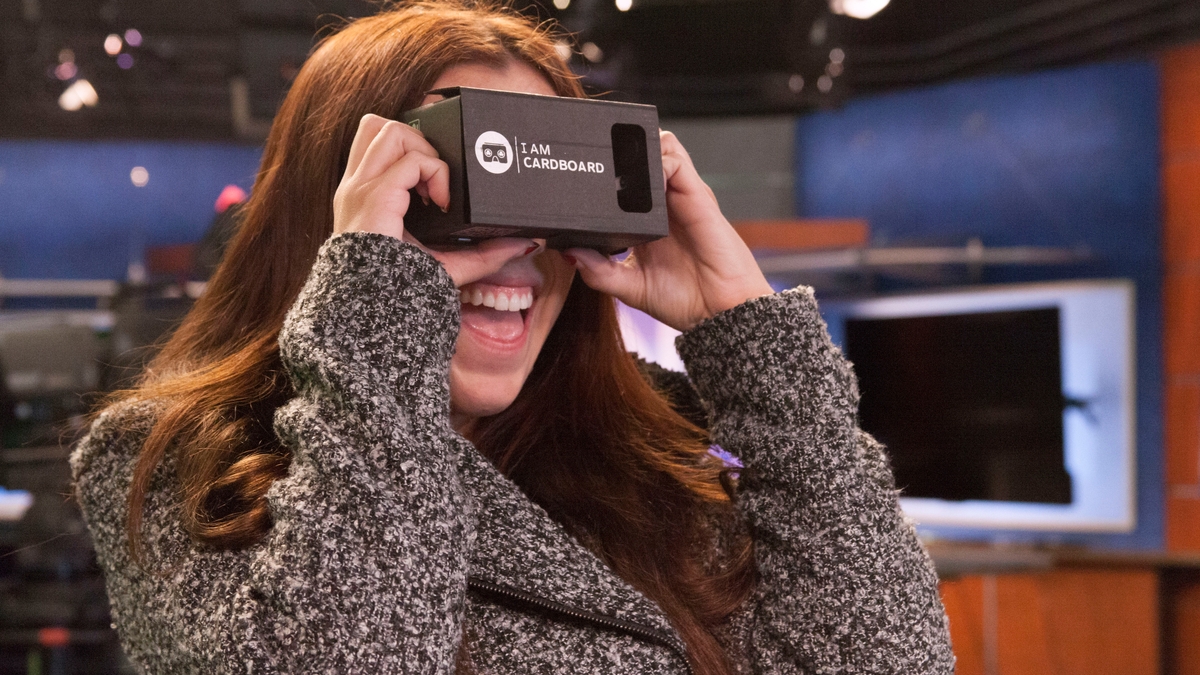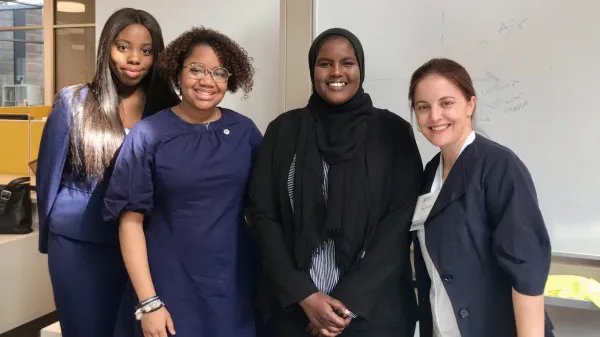Cronkite School showcases journalistic innovations
Innovation Day displays how tools like drones, virtual reality can impact storytelling coverage

Journalists of the past didn't have the capability to fly a drone, direct a robot or transform a smartphone into a virtual-reality experience.
But they do now.
Technology is changing the way we view the world, and how we report on it and the issues that affect it. Which means the journalists of today — and tomorrow — will be able to incorporate the spoils of modern technology to tell the stories of how we live.
Today from 5-8 p.m., the Walter Cronkite School of Journalism and Mass Communication in downtown Phoenix will host an Innovation Day to underscore how new technologies are impacting news coverage and how they can help improve journalism — like the I Am Cardboard kit (shown above) that turns smartphones into virtual-reality devices.
“Reading about new technology is one thing. But trying it yourself in a fun atmosphere is a better way to understand,” said Eric Newton, Cronkite’s innovation chief. “Since Cronkite News is both a quality news service and a test bed for new ideas, we’re always looking forward.”
The first-ever expo will feature 16 innovation stations and include hands-on activities with ASU professors and students demonstrating the use of indoor drones, 360-degree cameras and more. Students will also tweet ideas for journalistic uses of the technology with the hashtag #cronkiteinnovation.
Attractions include:
• Fly a Drone: Experience flying an indoor drone, and how it can impact news coverage.
• Drive a Bot: See how telepresence robotsTelepresence Robots help give a better sense of remote physical presence for communication and collaboration in the office, home, school, etc. when one cannot be there in person. The robot avatar, usually a phone or tablet mounted on a motorized desktop stand, can move or look around at the command of the remote person. — Wikipedia can change communication in journalism and beyond.
• Experience Virtual Reality: Discover how to transform a smartphone into a virtual-reality experience and test out various virtual-reality apps developed by media companies.
• Try a 3-D Printer: Check out a 3-D printer from the Ira A. Fulton Schools of Engineering, and learn how it is transforming industries and everyday life.
• Wear Your Media: Try out a variety of wearable technologies, including Apple Watches, Fitbits and Thync, a device co-developed by an ASU professor that helps create either calm or energy.
• Demo Reporting Apps: Experience more than a dozen mobile reporting apps that are reshaping how journalists report from the field.
• Discover the Power of Sound: Test out parabolic microphones, which can pick up sounds from great distances, as well as other cutting-edge audio equipment.
Innovation in journalism will even seep its way into sports, said Brett Kurland, who heads up Cronkite’s Phoenix Sports Bureau. He said he has been recently been reading the Sunday New York Times with Google Cardboard, which gives him a virtual experience.
“I was instantly fascinated and couldn’t get enough of it. Almost instantly I wanted to figure out a way to use virtual reality in our sports storytelling and immerse readers,” Kurland said. “For me the technology isn’t about the whiz-bang factor. Journalism, at its core, is about constantly exploring ways to tell stories better and how to engage an audience.”
Innovation Day
What: A showcase of technological advances in the journalism realm.
When: 5-8 p.m. Wednesday.
Where: First Amendment Forum at the Walter Cronkite School of Journalism and Mass Communications, 555 N. Central Ave., Phoenix.
Cost: Free; no registration required.
Details: Go here for more information.
More Law, journalism and politics

CBS News president to give keynote address at Cronkite School’s spring convocation
Ingrid Ciprián-Matthews, president of CBS News, will serve as the keynote speaker at Arizona State University’s Walter Cronkite School of Journalism and Mass Communication spring 2024 convocation. …

School of Politics and Global Studies director's new book explores mass violence
Why do people commit atrocities and why are certain groups, including religious and ethnic, more vulnerable to large-scale violence? These questions are explored in a new book by Güneş Murat Tezcür…

ASU faculty contributing to improvement of Wikipedia
Many academics have a love-hate relationship with Wikipedia. While the website has information about almost anything you can imagine, the credibility of that information is sometimes suspect. Tracy…